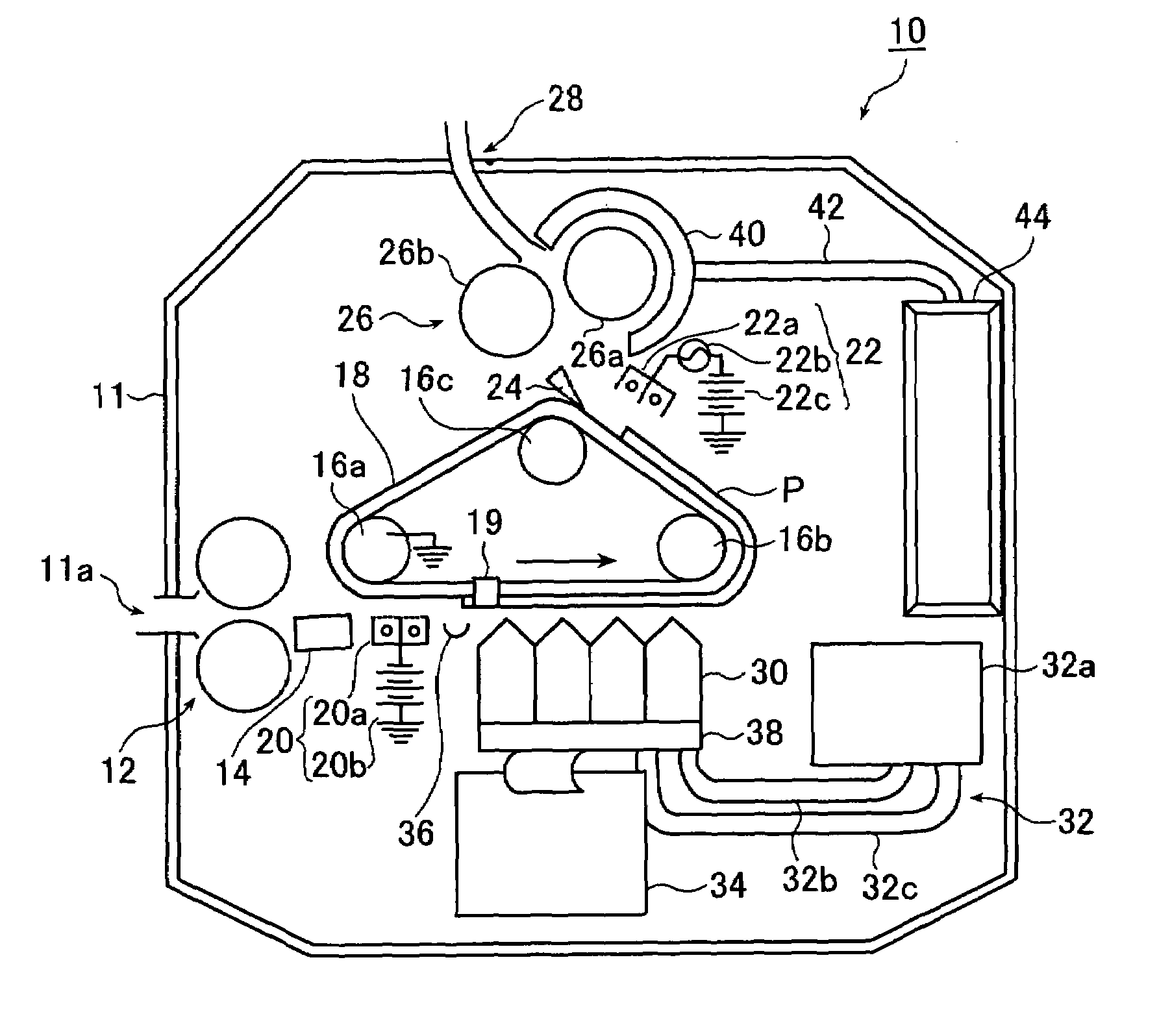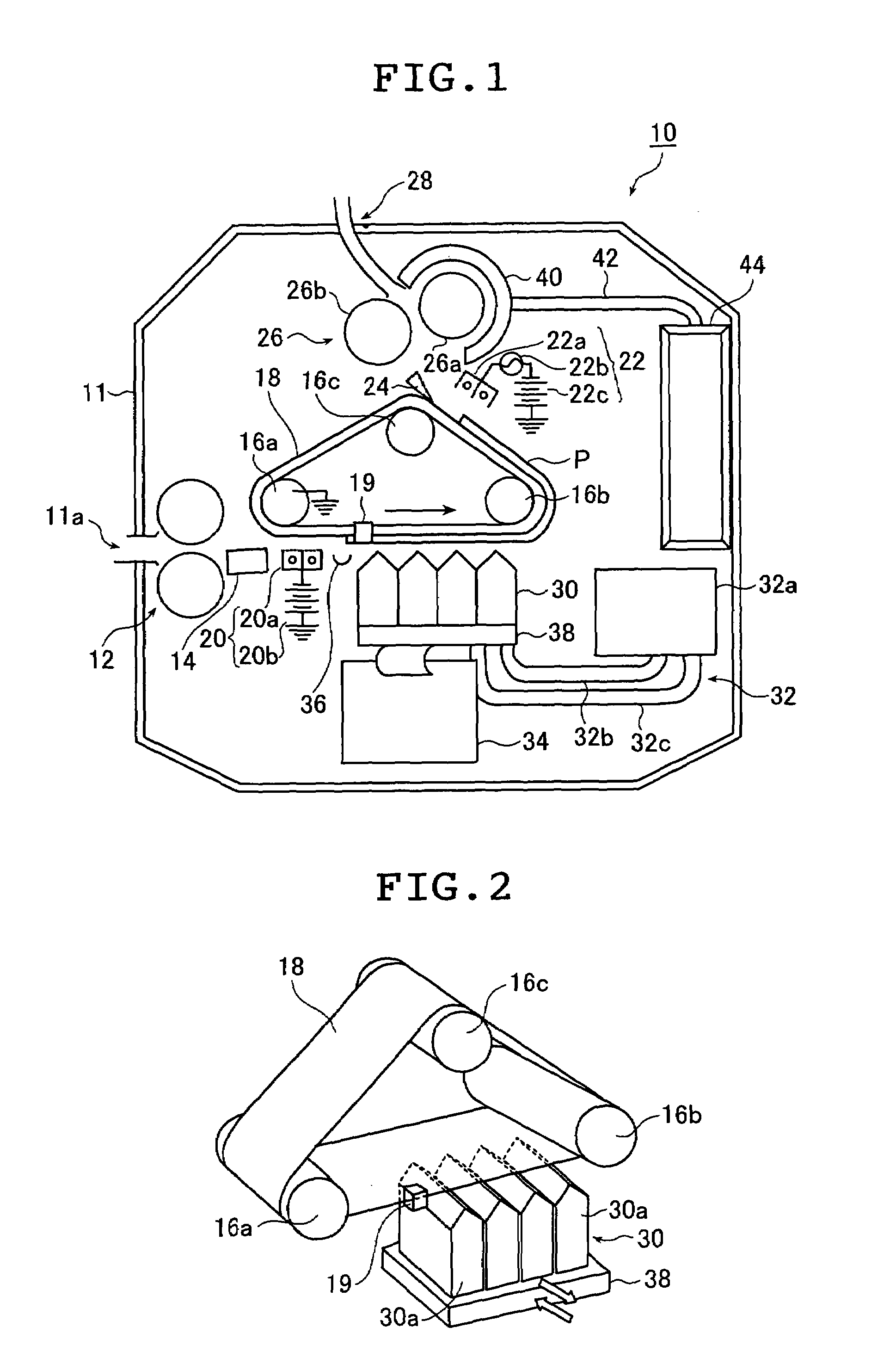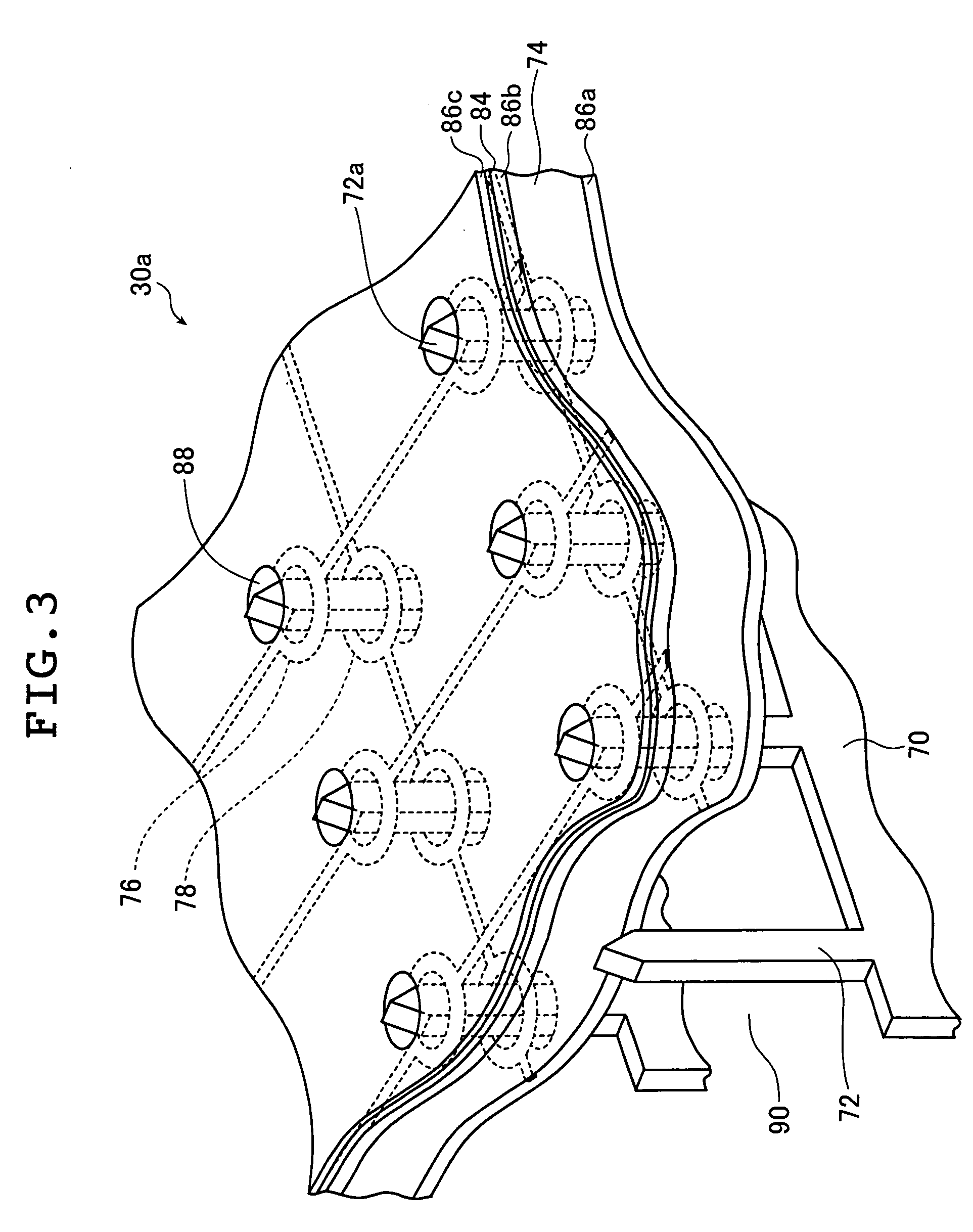Ink jet recording apparatus
a recording apparatus and jet technology, applied in the direction of printing, other printing apparatus, etc., can solve the problems of reducing the collection efficiency of the solvent collection device, reducing the collection efficiency of the collection device, and affecting the effect reducing the influence of water vapor components, and efficiently removing solvent vapor
- Summary
- Abstract
- Description
- Claims
- Application Information
AI Technical Summary
Benefits of technology
Problems solved by technology
Method used
Image
Examples
first embodiment
[0036]FIG. 1 is a schematic construction diagram showing an overall construction of the ink jet recording apparatus according to the present invention.
[0037]An electrostatic ink jet recording apparatus (hereinafter referred to as the “ink jet printer”) 10 shown in FIG. 1 records a full-color image by forming an image of ink particles (color particles) through ejection of ink droplets in four colors in accordance with inputted image data using an image forming means onto a recording medium P transported by a transport means and fixing the image of ink particles formed on the recording medium P. Also, the ink jet printer 10 collects air containing a large quantity of ink solvent vapor from a region in proximity to a fixing / transporting means 26 using a collecting means and removes the solvent in the collected air using a removing means.
[0038]The ink jet printer 10 shown in FIG. 1 is an apparatus that performs one-sided four-color printing on the recording medium P. For this purpose, a...
second embodiment
[0151]Next, the ink jet recording apparatus of the present invention will be described.
[0152]An ink jet printer 100 shown in FIG. 6 has approximately the same construction and function as the ink jet printer 10 shown in FIG. 1. However, the ink jet printer 100 differs from the ink jet printer 10 in that the recording medium P is not directly charged for image formation, an insulative transport belt 112 is used, a conductive platen 114 is used as the counter electrode of an ejection head 30, an electrostatic adsorption means 116 and a discharge means 117 that are each a conductive roller are used, a preliminary heating means 118 is provided between the discharge means 117 and a fixing / transporting means 26, and a blowing means 119 is provided in addition to a hood 40 and a duct 42 as a solvent-containing air collecting means. In the following description, the same construction elements as in the ink jet printer 10 are given the same reference numerals and different construction eleme...
third embodiment
[0162]It should be noted here that in order to maintain the distance between the ejection head 30 and the recording medium P transported by the transport belt 112 constant, in place of the above-mentioned method where the. conductive platen 114 is used, a tension member for having the transport belt 112 pass by a home position under a stretched state may be provided for the back surface of the transport belt 112 at a position opposing the ejection head 30. As the tension member, it is possible to use a conductive roller or the like, for instance. These constructions are also applicable to the ink jet printer 10 shown in FIG. 1 and each embodiment of the present invention such as a third embodiment to be described later.
[0163]The electrostatic adsorption means 116 is a grounded conductive roller and contacts a surface of the recording medium P fed by the feed roller 12, thereby removing electrical charges generated on the surface of the recording medium P through the transport belt 1...
PUM
 Login to View More
Login to View More Abstract
Description
Claims
Application Information
 Login to View More
Login to View More - R&D
- Intellectual Property
- Life Sciences
- Materials
- Tech Scout
- Unparalleled Data Quality
- Higher Quality Content
- 60% Fewer Hallucinations
Browse by: Latest US Patents, China's latest patents, Technical Efficacy Thesaurus, Application Domain, Technology Topic, Popular Technical Reports.
© 2025 PatSnap. All rights reserved.Legal|Privacy policy|Modern Slavery Act Transparency Statement|Sitemap|About US| Contact US: help@patsnap.com



